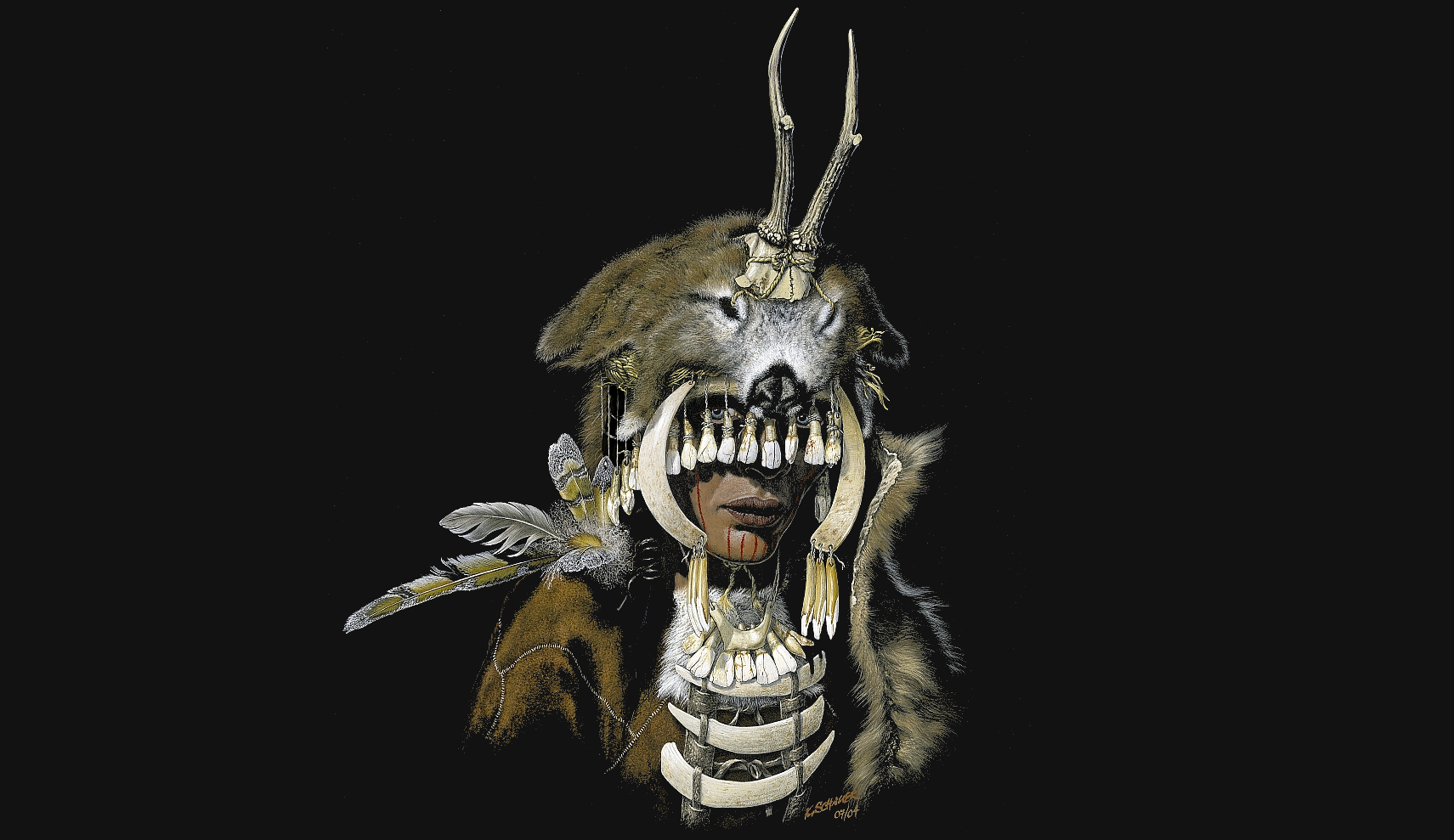
Name: Bad Dürrenberg headdress
What it is: An accessory made from deer antlers and boars' teeth and tusks
Where it is from: Bad Dürrenberg, Saxony-Anhalt, Germany
When it was made: Around 7000 to 6800 B.C.
Related: Doban-kun: A 'cute' human-shaped counting tool from prehistoric Japan
What it tells us about the past:
This headdress is just one of numerous artifacts discovered in 1934 in the lavish grave of a woman who lived during the European Mesolithic period (15000 to 5000 B.C.). The unique array of grave goods and the malformations of the woman's skeleton suggest that she may have held a special social role, such as a shaman.
The Bad Dürrenberg burial is one of the oldest in central Germany. It consists of the skeleton of a woman who was between 25 and 40 years old when she died, as well as the fragmentary remains of an infant across her lap. However, the baby wasn't hers; it was a fourth or fifth degree relative, research found. The grave was filled with red ochre powder and contained a number of unusual objects, such as a hollow crane bone that was used as a container for tiny stone knives; a polished ax; a deer bone that was used to apply red ochre; and at least 50 pendants made from cow, bison and deer teeth.
The artifacts were not the only unique aspects of the burial. The woman's skeleton was also atypical in that her first cervical vertebra, which connects the spine to the skull, was irregularly shaped and partly fused. This bony anomaly may have caused the woman to have unusual sensations — like the feeling of snakes or ants crawling on or under her skin — or involuntary jerky eye movements, either of which may have marked her as different from a young age.
Based on the artifacts and bones, experts at the State Office for Heritage Management and Archaeology Saxony-Anhalt think the woman may have been a shaman or a spiritual healer — someone who could bridge the world of the living and the dead as well as cure diseases. They reconstructed the woman's headdress based on the practice of shamanism known from Siberia and elsewhere in northern Eurasia. The various animal bones, shells, tusks and antlers could have been strung together as a shamanic mask and headdress.
The Bad Dürrenberg shaman was one of the last of the Mesolithic hunter-gatherers who lived in Europe shortly before people adopted agriculture and became sedentary. She may have roamed a dense birch forest in search of disappearing game animals, using her headdress and mask to take the form of a spirit animal like a doe. But in the end, this last Mesolithic shaman may have died of a dental abscess that spread, causing multiple infections in her sinuses and, eventually, her death.







